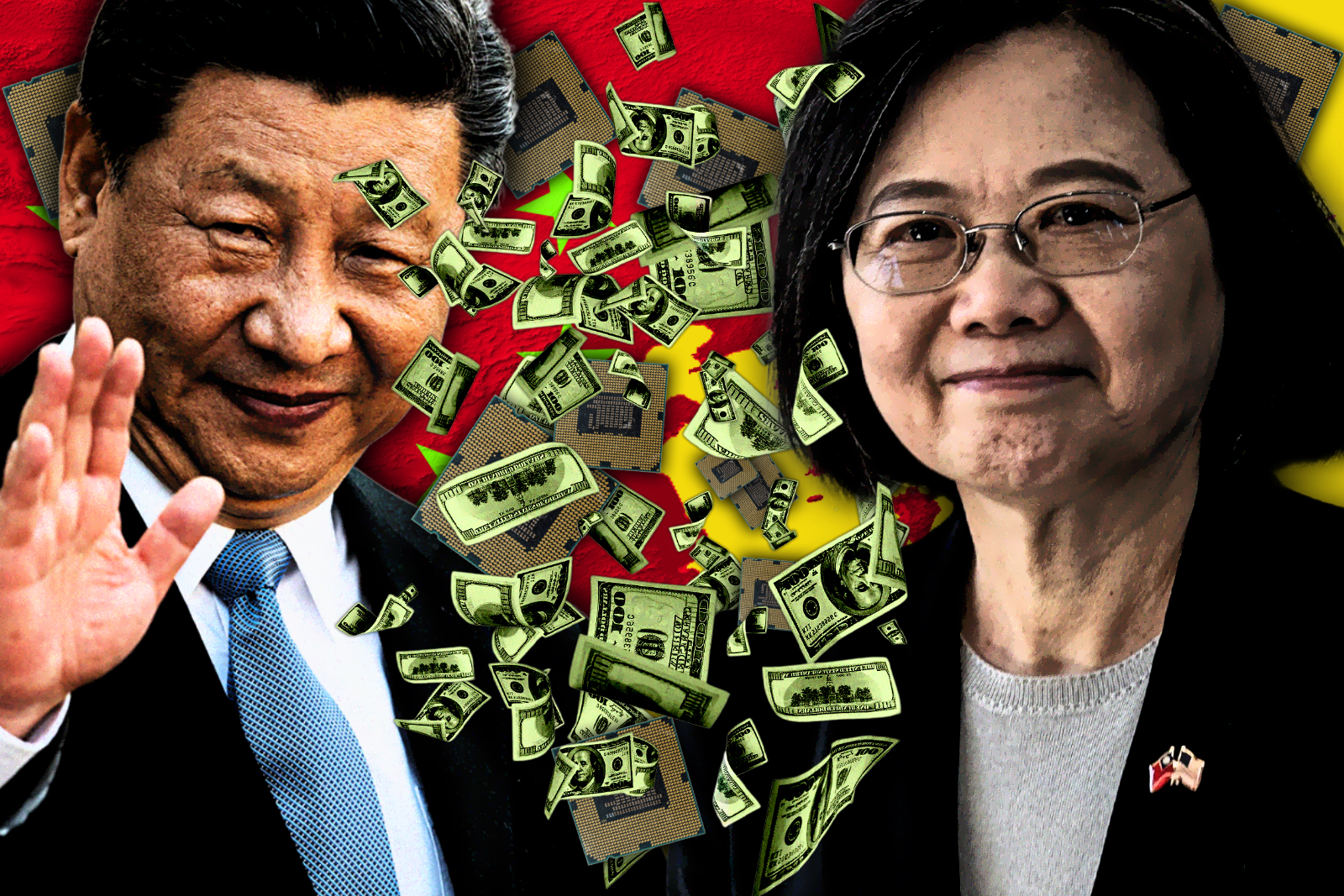
No Single Country Should Corner the Market on Chips
Thanks to huge government backing, massive investments in infrastructure, and highly skilled workforces, the world’s biggest microchip makers have clustered largely in East Asia, especially Taiwan and South Korea. As a result, companies like TSMC and Samsung have established themselves as global leaders in technology and innovation, not to mention research and development. While this regional focus has undoubtedly been great for spurring economic growth, it also introduces urgent geopolitical risks.
Tensions between major world powers in East Asia threaten to disrupt the flow of microchips, potentially causing widespread shortages that could damage industries and economies everywhere. Rising tensions between China and the United States over Taiwan’s status have flared up recently. North and South Korea also remain deeply divided. Any increase in these geopolitical rivalries could severely restrict global trade in microchips and the advanced technologies they enable. This should be a cause of concern for all of us.
From fields to factory to faultline
Thanks to decades of long-sighted government policy, private sector efforts, and technological partnerships, Taiwan dominates the global manufacturing of microchips. Beginning in the 1970s, Taipei sought to shift from an agricultural economy to more advanced, higher-value industries. After struggles in other sectors, the country targeted microchips as a strategic priority. Nurturing many small, specialized companies helped Taiwan become a global leader in microchip manufacturing while benefiting from outsourcing to American and other companies seeking lower costs and expertise.
Taiwan is almost uniformly not recognized as a sovereign state by the international community or even the United Nations. It also remains at the heart of enormous geopolitical tensions because of its unmatched ability to produce microchips. This is why recent shifts in U.S. policy towards Taiwan are misguided, reckless, and pose a threat to international stability. Starting with the Trump administration, Washington has abandoned its longstanding policy of ‘strategic ambiguity’ over Taiwan in favor of more openly challenging China on the issue. This provocative reversal undermines the established ‘One-China’ policy which enabled decades of stability, and now risks dangerous escalation over what is an absolute and core national interest for China.
U.S. reliance on Taiwan’s TSMC is a case in point. This company alone accounts for over 50% of the global foundry market, producing chips for major companies like Apple, Qualcomm, and Nvidia. Losing access to TSMC and Taiwan’s chip sector would be catastrophic for many U.S. tech companies and the broader global economy. While Washington’s stance is that it’s about defending an outlying democracy, it is doubtful the same interest would exist if it were not for the broader context of the China-U.S. superpower rivalry over technological superiority.
Accordingly, the United States not only risks sparking a confrontation with unpredictable outcomes, but also damaging the very supply chain integrity on which the world’s technological advancement depends. Heightening tensions over Taiwan threatens to disrupt trade flows the global economy depends on, even as U.S. tech companies remain deeply reliant on Taiwanese manufacturing. U.S. strategy towards China requires prudent diplomacy, not provocation that could prompt conflict over issues like Taiwan.
Lessons learned
Policymakers in Washington must recognize that its new strategy of de-risking from China will inevitably lead to broader decoupling with higher levels of risk and lower levels of trust. As a rising power, China needs to be engaged as a civilizational state rather than pursuing efforts to curb its influence or power on the global stage. Cooperation and coexistence, not open confrontation, are urgently needed to navigate challenges from trade to technology, climate change, and global security. Reckless escalation over Taiwan benefits none whereas responsible competition and coordination serve all.
While decades of investments allowed regions across the globe to develop competitive advantages in strategic industries like microchips, an overreliance on any single region poses threats requiring urgent action. In 2021, companies worldwide faced microchip shortages, demonstrating how vulnerabilities in global supply chains can spread rapidly and cause lasting harm. The challenges that have emerged pose risks from concentrating production in specific areas, especially those subject to geopolitical tensions. Mitigating these risks will require diversifying production globally across multiple regions. Recent world events prove that no single region should dominate any strategic supply chain. Diversification offers clear benefits, as shown in industries like pharmaceuticals, where overreliance on a few countries has caused damaging shortages but also spurred the development of regional alternatives.
The experiences of countries previously seeking to gain market share in microchips offer sobering lessons. Singapore spent over two decades and billions of dollars backing Chartered Semiconductor Manufacturing (CSM) to build a domestic industry but ultimately failed. Acquired by Abu Dhabi’s sovereign wealth fund in 2009, CSM merged into Global Foundries. Despite government incentives, subsidies, and workforce funding, CSM couldn’t overcome lower-cost Chinese competitors and leaders like TSMC. Struggling to differentiate itself, CSM’s profits suffered until costs overtook its capabilities. Although Singapore retains a robust microchip industry, CSM shows the difficulty of picking national champions, even for a strategic government.
While CSM exemplifies the challenges of state-backed enterprises in this sector, long-term government commitments and investments can still create opportunities. South Korea recently announced plans to build the world’s largest microchip manufacturing center at a cost of $230 billion. TSMC’s international expansion aims to maintain its leadership over the next 10 to 20 years, suggesting more capital investment and global diversification of production are on the horizon.
A view from the Gulf
Attracting new partnerships or strategically pursuing fresh avenues of supply chain diversification represent appealing options for the Gulf region. Building synergistic clusters in areas such as AI, robotics, and advanced telecommunications could serve to drive regional innovation and spur broader economic growth over the long term. However, developing such ambitious partnerships and strategic industrial clusters would likely take many decades of consistent support and commitment to fully realize, especially without disruption from periodic tensions that unfortunately arise from time to time.
One potentially fruitful path could be for the Gulf Cooperation Council (GCC) to consider targeted investment in developing a robust regional research, development, and manufacturing hub focused on cutting-edge microchips and other critical components of the high-tech sector. By first establishing deeper cooperation and integration on such a strategic level, these nascent partnerships could then be gradually extended to other priority areas like AI which are crucial for cultivating a sustainable knowledge-based economy in the 21st century.
Achieving this vision would require the GCC to engage in an equitable, level-headed manner with key global partners like the United States and China. Indeed, this sort of balanced and pragmatic engagement is precisely how the Gulf region can best leverage its strategic location and relationships to effectively navigate the evolving era of intensifying global strategic competition within an increasingly multipolar world order. Overall, diversifying partnerships and supply chains prudently could yield substantial economic and geopolitical benefits for GCC members if implemented with a long-term, coordinated strategy.
Continued progress in AI, 5G, and other frontiers will only heighten demand for microchips. With diversification, cooperation, cross-border government support for research and development, and incentives promoting supply chain resilience, the microchip industry should improve its ability to navigate geopolitical risks to enable future innovation and growth. While competitive advantages drove the historical concentration of production largely in East Asia, overreliance on any single region poses threats requiring a global solution. Microchips are fundamental to prosperity, but global supply chains remain fragile without diversification and cooperation among stakeholders.
The future remains uncertain, but one thing is clear: microchips cannot be left vulnerable to geopolitics. Proposed barriers to trade and technology cooperation only undermine shared progress, accelerate global decoupling, and intensify geopolitical rivalries. Instead, coordinating international research partnerships, workforce education programs, and production incentives across borders can navigate challenges and secure microchips’ future enabling global growth.
Openness, diversification, and partnerships across borders are needed so microchips can continue powering the technologies that improve lives worldwide. The future is fragile without a commitment to shared progress today. Collective action now ensures our technological tomorrow.
The views expressed in this article are those of the author alone and do not necessarily reflect those of any institutions with which the author is associated.

